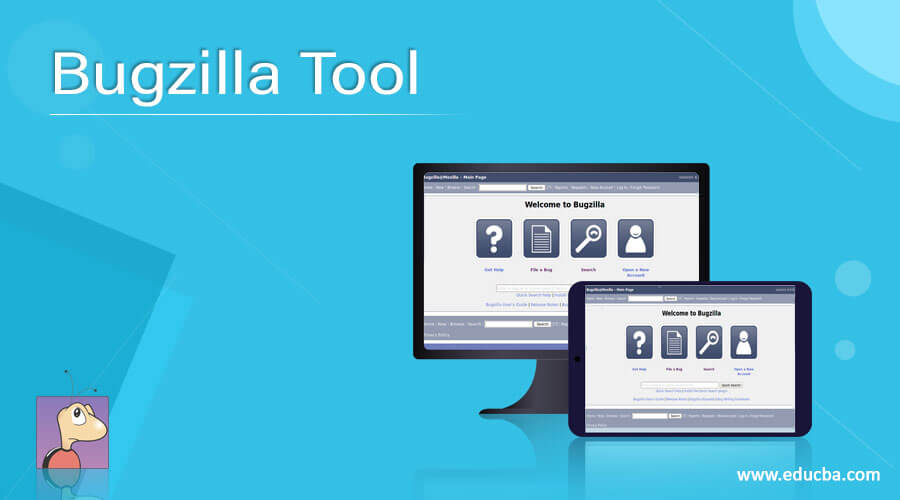Updated April 11, 2023
What is Bugzilla?
Bugzilla is an open-source platform for bug and issues monitoring that helps developers to keep track of their product’s unresolved issues. The tool is available free of cost. It is developed in Perl and uses a database called MYSQL. Bugzilla is a monitoring tool for bugs as well as a test management tool. Bugzilla provides an excellent solution to configuration management and replication issues and it is easy to use. By creating a recorded workflow and clear reviews for excellent outcomes, it can enhance efficiency and transparency.
The following is a list of some of the most important features of Bugzilla:
- Bugzilla tool has advanced search capabilities
- Whenever the status of bugs changes, Bugzilla supports user-configurable email alerts.
- It shows The full history of bug updates.
- Bugzilla offers a graphical representation as well as an inter-bug dependency track.
- Bugzilla helps users to link and manage Bug-supported files.
- Bugzilla has a built-in, product-based, discrete authentication, and security system which is why it is safer.
- Bugzilla has a security audit and runs under the taint mode of Perl.
- It supports A reliable and robust, RDBMS (Rational Data Base Management System)
- Web, XML, E-Mail, and console interfaces are supported.
- Bugzilla provides a wide variety of user preferences and customizable features and functionality.
- It supports a localized Graphical User interface for users.
- Extensive configurability, since it can be configured for a better user experience with other test management software.
- There is an easy update route for Bugzilla between various versions.
Features of Bugzilla Tool
Here are some detailed features of Bugzilla
1. Bugzilla has two types for search:
It has an easy to use Google-like bug scan, and it also scans for the full text of a bug. This offers an advanced search system where users can generate any form of search you want, like time-based searches.
2. User preferences-controlled Email Alerts
If any changes are implemented in the Bugzilla, you will receive an email and the updates you receive about which bug is fully regulated by user preferences.
3. Bug lists in different formats
Reports and Graphs as user check for bugs, a list of bugs in various formats, like iCalendar, Atom, etc. is been displayed. When using the time tracking function in Bugzilla, the iCalendor format is used. In Bugzilla, there are many more formats available, including a printable format that contains all bug information, a CSV format that is used to import a bug list in spreadsheets.
4. Organized Reports by email
Bugzilla has the ability to send users or a team to determine the search results on a schedule you mentioned.
5. Automatic Detection of Duplicate Bug
When a user files a new bug, and when a user types a bug summary, the system scans for specific bugs. If the system detects several bugs, it makes it easy to add one of those bugs to the CC list, instead of building another one.
6. File or Change Bugs by email
To create a new bug or modify the current bug, the user can send an email to Bugzilla as well as User can attach the Bug files.
7. Time Tracking Capability
The functionality of time tracking is also supported by Bugzilla. A User can decide how much time it takes for a bug to get patched so you can also monitor the time user need to spend on the bug. The deadline by which the bug needs to be resolved can also be set.
8. Request system
The request system is a way to ask other users with a bug to do something. The user may either approve the request or reject the request, and the response will be monitored by Bugzilla.
9. Move bugs in the installation
Bugzilla has the capability to pass the bug from one installation of Bugzilla to another. In Bugzilla, a bug can be transferred around multiple versions as well.
10. Monitoring other users
Bugzilla helps the user to monitor the activities of other users. The user will still be going to get an email the user receives from Bugzilla. When some developer goes to exit, this feature is important, so other developers need to handle the bug.
11. Charts and Reports
An advanced reporting framework. If the user wants to know how a bug database looks, then the user can build the two X-axis and Y-axis regions. User can limit the details of a bug by using search criteria. These reports can be exported in CSV format, too.
Conclusion – Bugzilla Tool
In this article, we have seen what is Bugzilla and its features. I hope you will find this article helpful.
Recommended Articles
This is a guide to Bugzilla Tool. Here we discuss the What is Bugzilla, versions, and Features of Bugzilla. You can also go through our other suggested articles to learn more –

